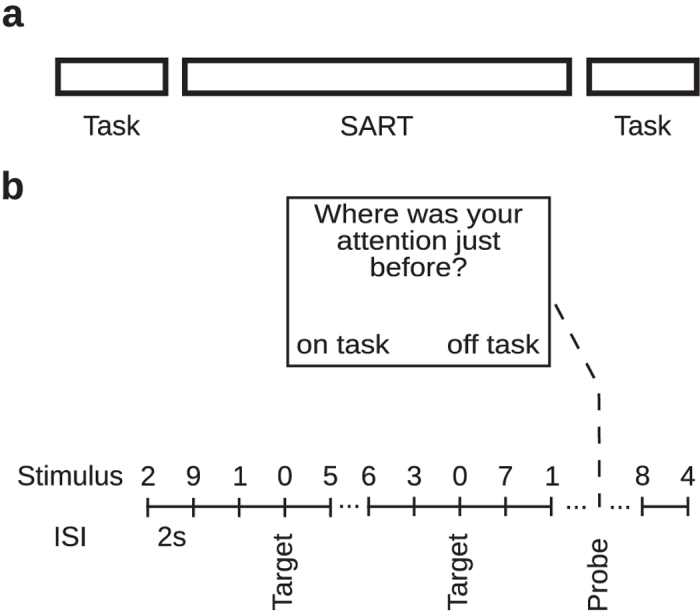Figure 1.

Experimental task. (a) Overall design for experiments 1–3. Sustained attention to response (SART) tasks were embedded into the incubation periods of a creative problem solving task (experiment 1 and 2) and a daily planning task (experiment 3). (b) An example of a stimulus sequence in the SART. Digits 1–9 were used as non-targets (i.e. required button presses), while 0 was a target which required participants to withhold their reaction. The digits were presented in a random order with 11% probability of targets throughout the experiment. Participants were instructed to respond as quickly and accurately as possible. The experience probes were presented at random time points during the SART with each inter-probe interval selected from the range of 40–60 sec.
